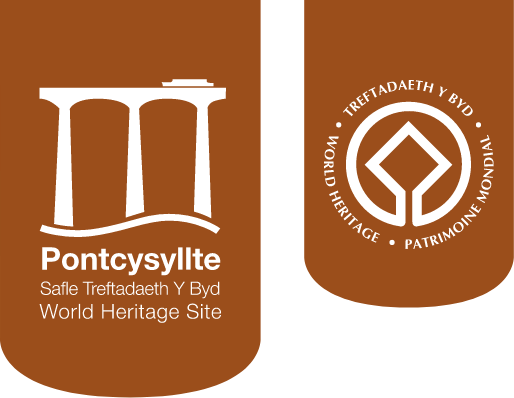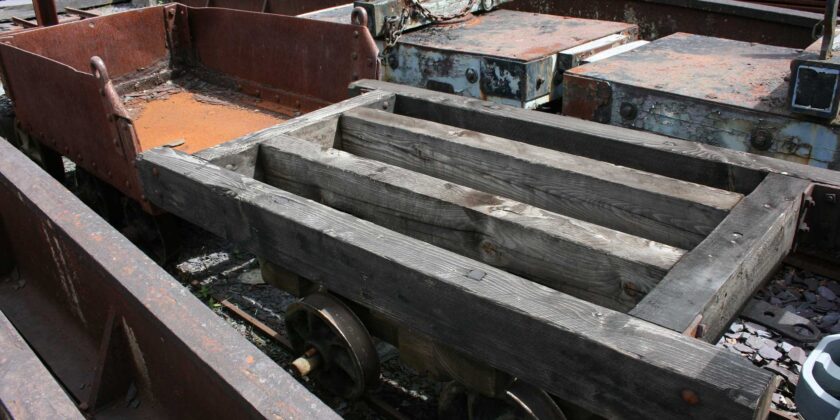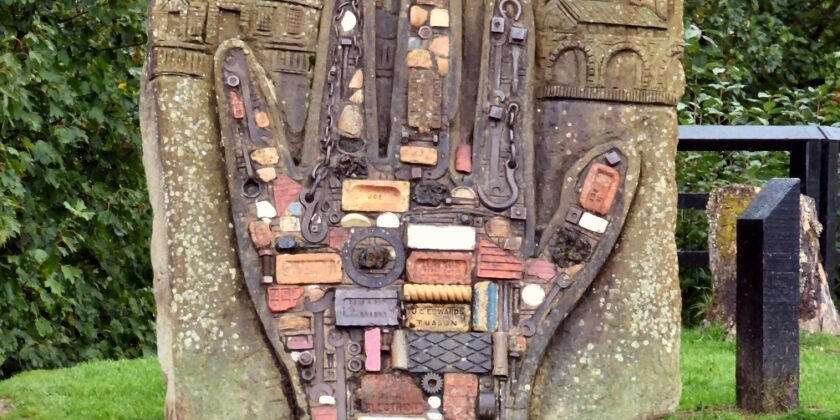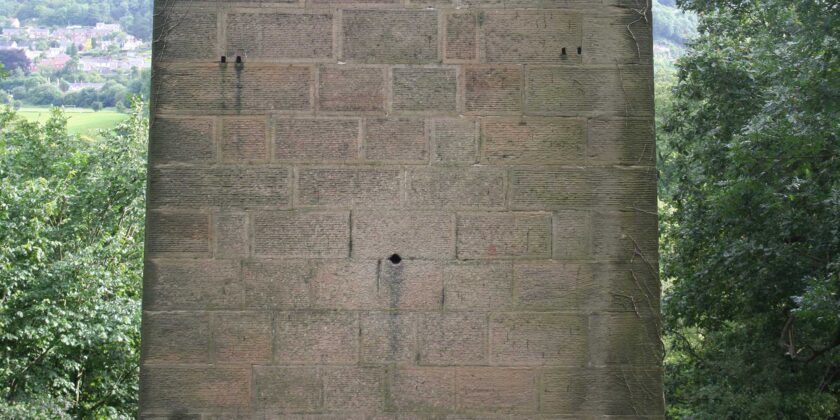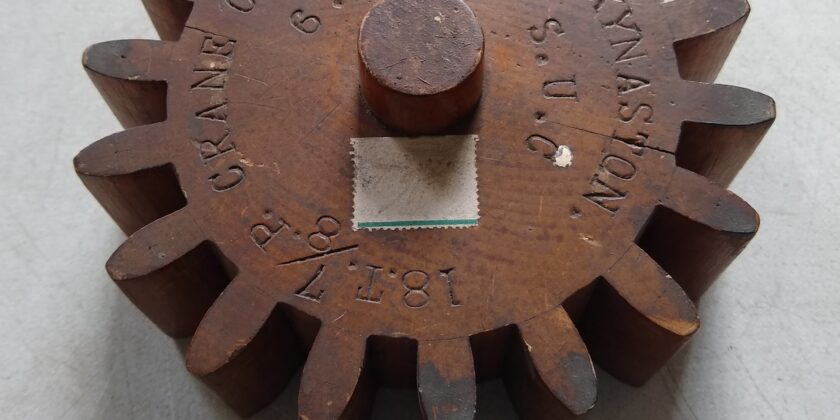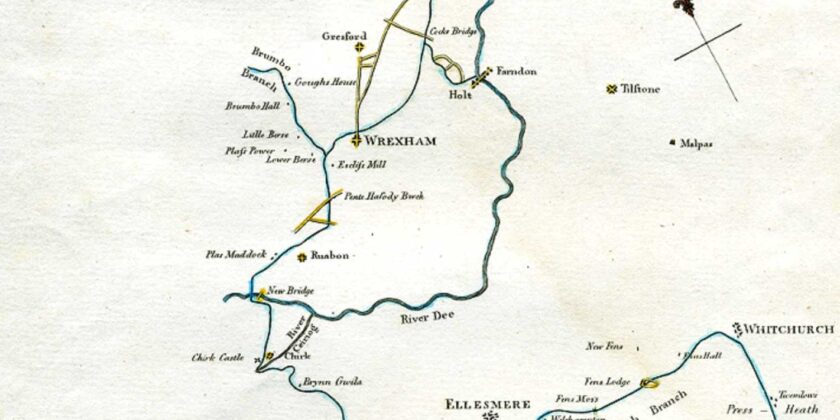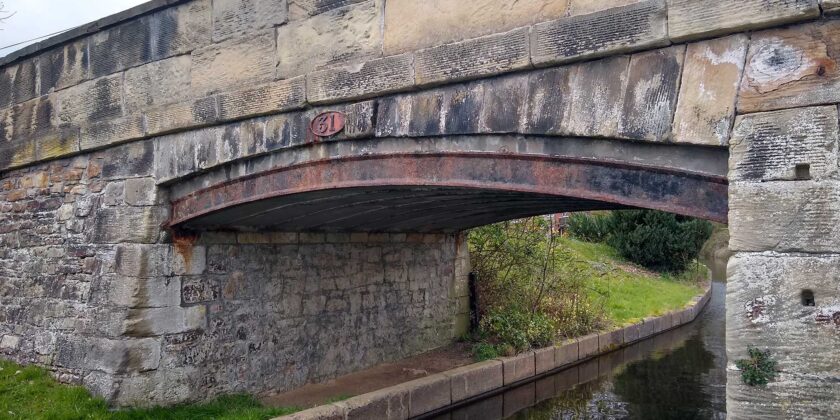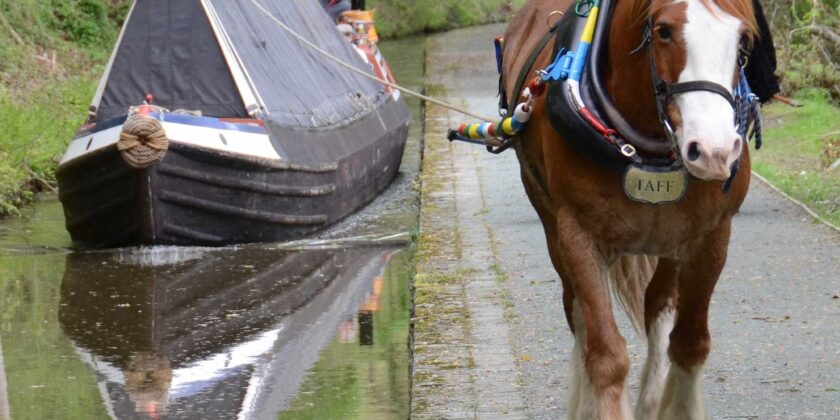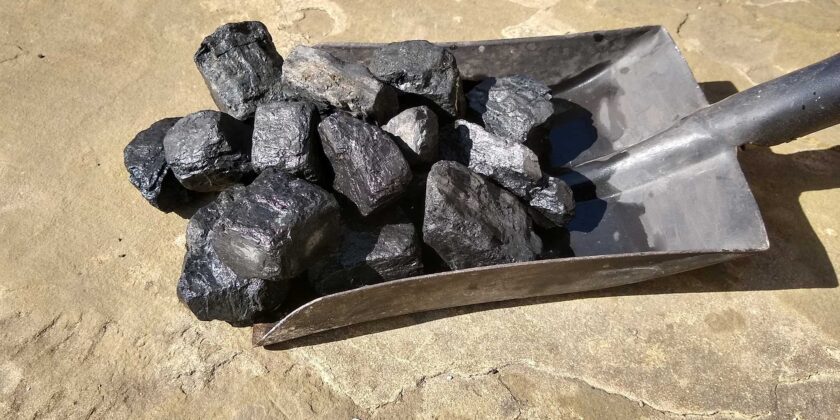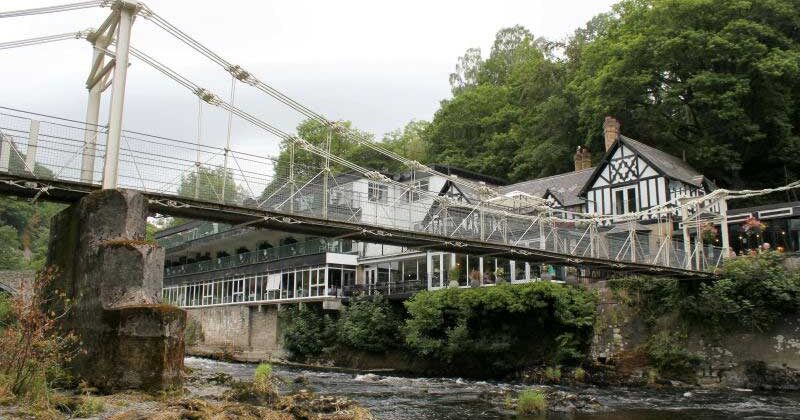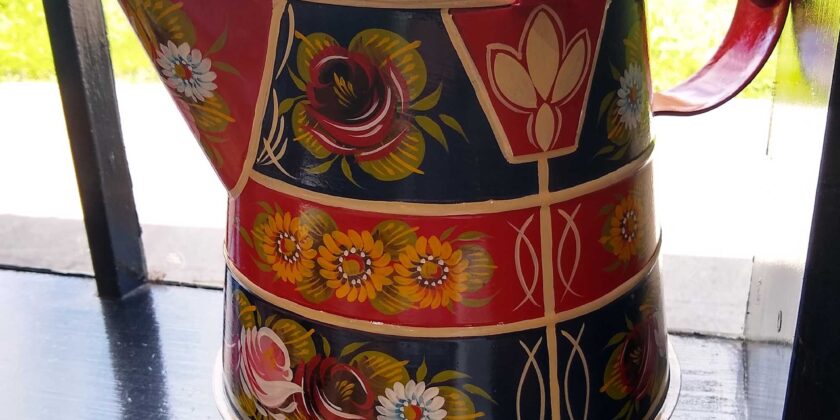Connecting the quarries to the world. Tramroad wagon from Moel Faen quarry.

Object Category: Trade and Industry
Sculpture
Artworks to explore along the canal. A large hand can be seen at the head of the aqueduct towpath, standing two metres tall. It is carved from limestone by Anthony Lysycia. The hand represents the many labourers who worked to build the aqueduct, and the rest of the canal, without modern machinery to help them.
Sandstone
Local stone supporting the stream in the sky. The tallest sandstone piers supporting the iron trough of Pontcysyllte aqueduct over the river Dee are over 38 metres (126 feet) high.
Patterns
Historic templates to keep the canal in working order. This pattern tells us about a disappeared part of the canal’s history. It is the only surviving evidence of a crane which operated on the Plas Kynaston branch canal. The Oil Works were part of the Graesser chemical works but in 1896 the crane was owned and maintained by the Shropshire Union Canal Company.
Surveying
Plotting and building a route through the landscape.
Iron
Telford used cast iron that had been made near the canal for the aqueducts at Chirk and Pontcysyllte, in bridges over the canal, like Rhos-y-Coed bridge at Trevor, and in structures throughout Britain.
Horses
The driving power on the towpath.
Coal
The power behind the Industrial Revolution.
The Chain Bridge
The oldest existing chain bridge in the world.
Life on the canal
At home and at work on the water.
